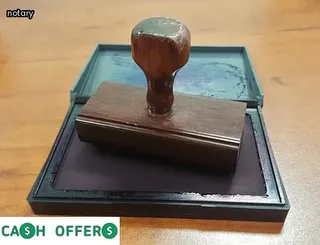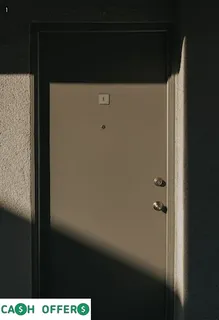Creating a Montana Quit Claim Deed involves gathering and completing the necessary documents. These documents include the Quit Claim Deed, which is a legal document that transfers real estate from one person to another without warranties or guarantees of any kind; the Grantor's Acknowledgement, which must be notarized; and the Real Estate Transfer Declaration Form, which must be signed by both the grantor and grantor's spouse if applicable.
All of these documents must be filled out completely in order for them to be accepted by the county clerk. Additionally, all signatures must be witnessed by two individuals who are not related to either party.
Finally, all forms must be accompanied by a fee paid to the county clerk in order for them to process and record the deed.

When it comes to understanding the different types of deeds used in Montana, a Quit Claim Deed is one of the most commonly used when it comes to transferring ownership of a house. A Quit Claim Deed is considered a fast and easy way for two parties to transfer interests in real estate without involving any warranties or promises.
This type of deed transfers title to the grantee with no covenants or warranties as to the title being transferred. In order to create a Montana Quit Claim Deed, you will need certain information including the names and addresses of both the grantor and grantee, as well as the full legal description of the property being transferred.
Additionally, all signatures must be witnessed by an authorized notary public who will verify that all parties involved have signed off on the deed. It is also important to note that if the grantor holds any mortgages on their property, they must also provide proof that they are up-to-date on payments before transferring ownership of their house in Montana through a Quit Claim Deed.
When it comes to transferring or conveying real estate in Montana, there are two main types of deeds that can be used: a Warranty Deed and a Quitclaim Deed. A Warranty Deed is the most common type of deed used in Montana and provides the highest level of protection for the buyer.
It guarantees that the seller has clear title to the property and warrants against any claims or liens on the property by anyone other than those listed as exceptions in the deed. A Quitclaim Deed, on the other hand, does not guarantee clear title to the property nor does it provide any warranties or assurances regarding liens or claims on the property.
With a Quitclaim Deed, the seller simply transfers their interest in the property without making any promises about what they actually own; thus, providing very little protection for buyers compared to a Warranty Deed. Although both kinds of deeds are legal documents that can transfer ownership rights to real estate, buyers should always proceed with caution when using a Quitclaim Deed as it offers much less security than a Warranty Deed.

Before signing a Montana Quitclaim Deed, it's important to understand what the document is and how it will affect your ownership of a house. A Quitclaim Deed is a legal document that transfers ownership of real estate from one person or entity to another without making any warranties or guarantees about the condition of the property.
In Montana, these transactions must be completed with the help of a Notary Public. When signing a Quitclaim Deed in Montana, you'll need to provide proof of identity and have all parties sign the deed in front of two witnesses.
You should also be aware that this type of deed does not transfer title insurance and may not protect against liens or other encumbrances on the property. Additionally, it's important to review all documents carefully before signing anything.
Finally, you may want to consult an attorney before proceeding with a Quitclaim Deed to ensure that you fully understand your rights and responsibilities when transferring ownership in Montana.
When creating a Montana Quitclaim Deed, it is important to consider the role of title insurance. Title insurance can provide protection if there are any legal issues that arise due to a defect in the title or if someone else has an unknown claim to the property.
It can also be used to ensure that all liens and encumbrances on the deed are satisfied before transfer of property is complete. Furthermore, when using a Quit Claim Deed, title insurance provides assurance that you have good marketable ownership rights over your house.
This type of security is essential for those seeking to protect their investment and ensure a smooth transfer of ownership. Ultimately, title insurance plays an essential role in creating a secure Montana Quit Claim Deed for your house.

When creating a Montana quit claim deed for your home, there are certain restrictions that must be taken into consideration. It is important to understand the laws and regulations of your particular county when determining how to best craft a deed.
In Montana, these restrictions may vary depending on the type of property being transferred. For example, if you are transferring mineral rights or water rights, special attention must be paid to the details of the deed in order to properly convey those rights.
Furthermore, certain properties may require additional documentation in order to confirm that the seller has title to the property they are attempting to transfer. Understanding all of these special restrictions ahead of time can help ensure that your deed is properly prepared.
Creating a Quitclaim Deed in Montana can offer you a variety of benefits. For example, if you are looking to transfer ownership of your house to another person quickly and with minimal hassle, then a Quitclaim Deed is the way to go.
It is also important to consider that it is the only way to transfer title without going through the probate process. This could be beneficial if you need to make an estate planning decision quickly or are seeking to avoid potential fees and delays associated with probate court proceedings.
Additionally, using a Quitclaim Deed allows you to reserve some interest in the property, allowing you to protect your rights as well as those of your beneficiary. Lastly, creating a Quitclaim Deed in Montana can help ensure that all legal requirements have been met before transferring property ownership.
It also eliminates any confusion over who holds title and provides clear documentation for future reference.

A Montana Quitclaim Deed is a legal document that transfers ownership of a piece of property from one person to another. It provides an effective way to quickly and easily transfer or acquire property without the need for lengthy legal paperwork or costly attorney’s fees.
The advantages of using Montana Quitclaim Deed Form include simplicity, cost savings, speed, and flexibility. The form is easy to complete without involving expensive attorneys or other professionals, with all the necessary information provided in plain language that can be understood by anyone.
Additionally, drafting a Quitclaim Deed eliminates the need for long delays associated with other types of real estate transfers since it can usually be done in just a few days. Lastly, the form is flexible enough to allow for changes to be made before it's filed, allowing parties to adjust the terms if necessary.
Filing a Montana Quitclaim Deed can provide a number of key benefits to those who own property in the state. If you are looking to transfer ownership of your house, filing a Quitclaim Deed can simplify the process and ensure that everything is properly documented.
It also enables you to avoid probate court, potentially saving time and money. A Montana Quitclaim Deed is a legal document that makes it clear who owns what portion of the property and allows for clear title transfer without any ambiguity.
Furthermore, if there are any liens or encumbrances on the property, filing the deed will help make sure those are taken care of before the title is transferred. Lastly, using a Quitclaim Deed protects both parties from future disputes or misunderstandings about who owns which portion of the property.
When done properly, filing a Montana Quitclaim Deed provides numerous key benefits for all involved in real estate transactions in the state.

Creating a Montana Quit Claim Deed for your house is an important legal process that must be completed properly in order to ensure it is valid. To make sure the process is done legally in Montana, it is important to understand the requirements of the state and have all of the necessary documents prepared.
Start by researching Montana real estate laws, specifically those related to Quit Claim Deeds, and consult with an attorney if you have any questions. Once you have gathered all of the required information, find or create a Quit Claim Deed form specific to Montana and fill it out with accurate details about yourself, the recipient of the deed, and your property.
It should also include any applicable clauses or conditions that need to be met. It's important to review this form carefully before signing it, as well as having a notary witness both parties' signatures.
Finally, submit your completed form to your local county recorder's office for filing. Following these steps will help you complete this process legally in Montana and protect your rights as a homeowner.
Completing a Montana Quitclaim Deed Form is relatively straightforward and simple. Before beginning, it's important to make sure you have all the necessary information and documents ready, such as the legal description of the property, the names of both parties involved in the transaction, and any other relevant details.
Once these items are collected, you can find a template for a Montana Quitclaim Deed online or at your local county clerk's office. Fill out the form with all relevant information, including signatures from both parties.
Finally, submit your completed form to your local county clerk for recording. This ensures that your deed is officially entered into public records so that it is legally binding.
Taking these steps will help ensure that your house transfer is properly documented.

In Montana, a Quit Claim Deed must be notarized in order for it to be legally valid. This means that the signature on the document must be witnessed by a Notary Public, who verifies the identity of the signer and their willingness to sign the deed.
The Notary Public will also add their own signature, as well as a seal or stamp to certify that they have attested to this transaction. It is important to make sure that all parties involved in the Quit Claim Deed are present when it is being notarized, including any witnesses if required.
The Notary Public will often ask for documentation such as an ID card or passport in order to prove identity and should provide a receipt after completing their duties. The Quit Claim Deed must also contain clear language stating that it is revocable or irrevocable in order to ensure its validity upon review by a court of law.
In addition to the Montana Quit Claim Deed, other forms may need to be filed with the county court where the property is located. Depending on the location, these additional documents may include a deed of trust, lien releases, an affidavit for transfer, and/or a statement of consideration.
The exact forms and documentation will vary depending on the county. It’s important to check with the court clerk in advance to make sure that all paperwork is in order before filing your Quit Claim Deed.
Furthermore, any existing mortgages or liens must be paid off in full prior to submitting your Quit Claim Deed or they will remain part of the recorded title even after a transfer. Additionally, if there are multiple owners listed on the deed, each owner must sign and notarize their respective document before filing it with the court in order for it to be valid.
Finally, you may need to pay applicable taxes or fees associated with transferring ownership of a property; check with your local tax office for more information about this requirement.

When looking to find and download free forms in Montana, the best place to start is with the Montana Secretary of State's website. Here you can find a variety of legal documents, including the Quit Claim Deed form you may need to create for your house.
This document is used when transferring ownership of real estate from one person or entity to another. Before downloading any forms, be sure to read the instructions carefully and make sure they are applicable to your specific needs.
You can also contact a local legal expert if you have questions about creating a quit claim deed for your house in Montana. Additionally, some county websites may offer free forms related to real estate transactions.
Taking time to research all available options will help ensure you are using the most current and accurate information when creating your quit claim deed.
A Montana quit claim deed is an important legal document that, when filed at the county clerk’s office, transfers the title of real estate property from one person to another. It is important to understand how a quitclaim deed affects your tax liability as it can have serious consequences for both parties if not handled correctly.
A quitclaim deed offers no warranties and does not guarantee that the grantor actually owns the property being transferred. As such, it can result in unexpected tax liabilities or other financial obligations for the grantee should any issues arise with title to the property after transfer.
Furthermore, failure to properly file the quit claim deed with local authorities can also lead to expensive legal fees or other penalties for both parties involved. Knowing how a Montana quit claim deed impacts your tax liability is therefore essential in ensuring that you are fully protected in this type of transaction.

If you are transferring ownership of a home in Montana, you must file a quit claim deed to legally transfer the title. Failing to do so can lead to a variety of consequences.
One of the main issues is that the previous owner will still be listed as the legal owner on public records, even if they no longer own the property. This means they will continue to owe taxes and other fees associated with owning the home.
Furthermore, not filing a quit claim deed can also lead to an inability to sell or refinance the property without additional paperwork being filed, which can be costly and time consuming. Additionally, it could potentially open up liability concerns for both parties involved regarding disputes over ownership rights.
Finally, any title insurance on the property may become invalid if a quit claim deed has not been properly filed with the state of Montana.
Creating a quitclaim deed in Montana is an important process for transferring ownership of your home. It is important to be aware of some common mistakes people make when completing this process, as these can lead to costly delays or even legal challenges.
Firstly, it is essential to use the correct wording in the deed. The language must accurately reflect the intention of the transaction and it must comply with Montana law.
Secondly, all parties involved must sign the document and have their signatures notarized. All signatures must be current and updated; otherwise, the deed will not be legally binding.
Thirdly, an accurate description of the property being transferred should be included in the quitclaim deed to ensure there are no discrepancies or confusion about which property is being transferred. Finally, all documents related to the transfer must be filed with the county clerk’s office as soon as possible after they have been signed by all parties involved.
Failing to do this could cause complications down the line if any questions arise about ownership of the property or if any disputes arise between those involved in its transfer. Following these simple tips will help you avoid common mistakes and ensure a smooth transition of ownership when creating a quitclaim deed in Montana.

When it comes to creating a Quit Claim Deed in Montana, there are a variety of ways to go about it. Some people prefer to take the DIY route and create their own documentation, while others seek professional assistance.
Because this type of deed is legally binding, it is important that everything is done correctly in order for it to be valid. Professional help may be beneficial if you are unsure of how the process works or what needs to be included in the document.
A lawyer who specializes in real estate laws can provide advice and guidance throughout the process. Additionally, they can help review any legal language used in the document and make sure that all necessary information is present before filing with the county recorder's office.
It may also be possible to find online resources or templates which can provide helpful instructions on how to create a Quit Claim Deed for your house in Montana.
Creating a Quit Claim deed in Montana can be a daunting task, but it doesn't have to be. Outsourcing the process of creating a Quit Claim deed in Montana is an efficient and cost-effective way to make sure your deed is done correctly and on time.
An experienced professional can help you fill out all the necessary paperwork, including preparing the legal documents needed for filing your quit claim deed with the state. They can also provide guidance on any questions or concerns you may have about the process.
Additionally, they may be able to provide advice about other important steps involved in creating a quit claim deed, such as researching local laws and regulations related to real estate transfers. Outsourcing this process can save you valuable time and money, while ensuring that your Quit Claim deed is created accurately and legally.
In Montana, a quitclaim deed is a legal document used to transfer ownership of real property from one person (grantor) to another (grantee).
To create a Montana quit claim deed for your house, there are several elements that must be included: Name of grantor and grantee, legal description of the property being transferred, adequate consideration for the transfer, acknowledgement by grantor that they are conveying all rights in the property with no warranties or promises, signatures of grantor and grantee and lastly, notarization of the deed.
All these elements must be present for it to be legally valid in the state of Montana.

A warranty deed in Montana is a legal document that is used to transfer ownership of real estate from one person or entity to another. The warranty deed provides assurance to the buyer that the seller has good title to the property and guarantees that they will defend the title against any claims.
The quitclaim deed, on the other hand, makes no promises about the quality of the title. With a quitclaim deed, there is no guarantee that the seller actually owns the property or has clear title.
A quitclaim deed simply transfers whatever interest or rights that the seller may have in a particular piece of real estate. When creating a Montana Quit Claim Deed for your house, you should make sure to include all necessary information such as names of all parties involved, legal description of property being transferred, date of execution and signature of grantor and grantee.
In order for your Montana Quit Claim Deed to be valid it must be signed in front of two witnesses who are both over 18 years old. After signing your Montana Quit Claim Deed with all necessary parties, it must be filed with your local county recorder's office for recording.
Filling out a quit claim deed in Iowa is a straightforward process that, when done correctly, transfers ownership of real estate from one person to another. The most important thing to remember is that the document must be signed and notarized in order for it to be legally binding.
To begin, you will need to obtain a form from your local county recorder’s office. This form will contain the necessary information about the property, including its description and current owner; therefore, make sure all of this information is accurate.
Once you have completed and signed the form, it should be taken to an authorized notary who can witness your signature and affix their seal. After this step is complete, the deed should then be filed with the county recorder’s office where it will become public record.
It's important to note that in Iowa there are specific requirements for how a quit claim deed must be filled out; therefore, if you are uncertain as to how to create one for your house in Montana, it may be wise to seek professional assistance.
Filling out a quit claim deed in Minnesota is relatively straightforward, but there are several important steps you must take to ensure that your deed is legally valid. First, gather the necessary information and documents, such as the current owner's name and address, the property description, and the buyer's name and address.
Once you have all of this information, you will need to prepare a quit claim deed form. You can find these forms online or at most county recorders' offices.
When filling out the form, be sure to include all relevant details regarding the transfer of ownership and make sure that everything is accurately stated. Once the form is complete and correctly filled out, it should be signed by both parties in front of witnesses who can attest to its validity.
The last step is to file the quit claim deed with your local county recorder's office so it can become part of the public record. Following these steps will help ensure that your Montana Quit Claim Deed for your house is legally valid and properly recorded.
A: In order to complete a quit claim deed to transfer property rights for a house in Montana, you must fill out the legal document that transfers title deed from one person or entity to another without providing any warranties. This type of conveyance does not guarantee that the seller has clear title of the property and does not protect against breach of warranty.
A: Quit claim deeds provide no warranties of title, whereas a general warranty deed in Montana includes an implied warranty of title that guarantees the buyer against any possible claims to the property by other parties.

A: Tenancy in Common allows for two or more people to own a property together, with each owner having an undivided interest. This means that upon death, the deceased owner's share of the property passes according to their will or state law. With Joint Tenancy, two or more people jointly own the property with rights of survivorship; meaning that if one joint tenant dies, the other joint tenant(s) automatically inherit that person's share of the property without it passing through probate.
A: Tenancy by the Entirety is only available to married couples in Montana and it provides both spouses with equal rights to the property. When transferring property rights through a quit claim deed, each spouse must sign the document for it to be valid.
A: The quit claim deed must be submitted to the local County Recorder or Register of Deeds office in order to transfer property title rights for a house in Montana.

A: In order to complete a quit claim deed to transfer property rights for a house in Montana, the grantor must sign and date the document in front of a notary public. Additionally, both parties must provide valid proof of identification and deliver the deed to the county recorder's office for recording. Joint Tenants and Tenants in Common differ in Montana due to the fact that when a joint tenant passes away their interest is automatically distributed among the other tenants, whereas with tenants in common the interest does not automatically pass on but instead goes through probate. The deed must be submitted to the county recorder's office of the county where the realty is located.
A: A Life Estate allows an individual to transfer their ownership interest in a property while retaining the right to use and inhabit it until death. To create a Life Estate in Montana, the owner must state their intention in the quit claim deed, which then transfers all ownership rights for the house upon death.
A: To complete a quit claim deed in Montana, you should first research Montana quit claim deed requirements, gather the necessary documents, fill out the quit claim deed form, sign and notarize the quit claim deed.

A: In Montana, the statutory requirements for completing a quit claim deed to transfer property rights is governed by the Decree of Jurisdictions and Statutes. These statutes outline the necessary steps and paperwork required to make a legal quit claim deed.
A: A quit claim deed should include the names of both parties, the legal description of the property, the chain of title for the property, and any price or consideration paid for the transfer. It is recommended that you seek legal advice prior to completing a quit claim deed in order to ensure that all terms and conditions are properly included in the contract.